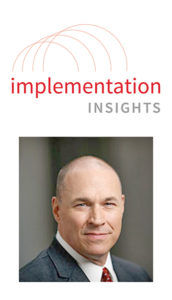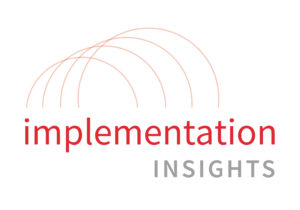
Rudi Bless, Chief Accounting Officer, Bank of America; member, SASB Foundation Board of Directors
In July 2020, Bank of America published its first Sustainability Accounting Standards Board (SASB) report. In this Q&A with Neil Stewart, SASB’s Director of Corporate Outreach, Rudi Bless, Bank of America’s Chief Accounting Officer and a member of the SASB Foundation Board of Directors, shares the company’s strong focus on environmental, social, and governance (ESG) factors and their role in how Bank of America drives responsible, sustainable growth.
Why did you decide to use SASB Standards to communicate with investors?
We are focused on responsible growth, which includes growing in a sustainable manner. We do that in part through a strong focus on environmental, social and governance issues: managing risk, being transparent, and holding ourselves accountable, and we believe it’s important to disclose these practices to our stakeholders, including investors.
We report ESG information under several frameworks and regularly assess how our reporting suite can be improved. In evaluating the SASB framework, we found the focus on investors and decision-useful data to be compelling. We also appreciate how the SASB Standards’ format and structure provides a direct and straightforward way of presenting sustainability information that is powerful and helps us explain our progress to investors.
How do SASB Standards complement other reporting frameworks that Bank of America follows?
As an organisation, we are deeply committed to sustainability, as we believe it is a core tenet of how we drive responsible growth. We have industry leading business and operational goals, an organisational structure designed to facilitate the achievement of those goals, and robust public reporting of our progress.
As mentioned above, we leverage a number of reporting frameworks to respond to the diverse priorities of our broad stakeholder, investor, and client base. We use the Global Reporting Initiative (GRI) framework to report annually on our ESG performance to a broad group of stakeholders. Earlier this year, we issued our first public report under the recommendations of the Task Force on Climate-related Financial Disclosures (TCFD), which outlines how we manage the risks of climate change to our business. Our TCFD report builds on nearly 16 years of reporting under the CDP global disclosure system on our opportunities and risks associated with climate change. In addition, our Environmental and Social Risk Policy Framework articulates how we approach environmental and social risks across our business, as well as outlining the environmental and social issues most relevant to us. We also disclose our ESG strategy, policies, and practices in our Annual Report and Human Capital Management Report.
The International Business Council (IBC) of the World Economic Forum, in partnership with Bank of America and the accounting firms Deloitte, KPMG, PwC, and EY, recently introduced a set of common ESG Stakeholder Capitalism Metrics. These metrics leverage the work of several reporting frameworks, including GRI, SASB, and TCFD. Companies can use the metrics and recommended disclosures to help guide stakeholders in evaluating their progress on advancing the United Nation’s (UN) Sustainable Development Goals (SDGs) priorities. Our CEO, Brian Moynihan, serves as chair of the IBC. The common core metrics will be used to measure and disclose meaningful and relevant aspects of ESG performance to a broad range of stakeholders, including TCFD-aligned reporting on material climate risks and opportunities.
Bank of America’s SASB report combined with our other reporting provides a comprehensive view of our progress towards achieving our sustainability goals and enables us to communicate to all of Bank of America’s stakeholders.
How does Bank of America think about the connections between ESG and financial performance?
At Bank of America, we believe in—and you will hear our CEO Brian Moynihan often talk about—“the genius of the AND.” We can and do deliver long-term returns for our investors and address the world’s most important priorities. Our focus on ESG objectives as part of how we drive responsible growth means that we are sustainable and investing for the long run, while delivering near-term results.
Sustainability is a central characteristic of our operating model and includes our core financing and advisory capabilities for our clients, how we manage our own operations, our global workplace practices, and our philanthropy. By aligning all of our capabilities, we create the scale needed to drive capital toward the world’s most important priorities as defined in the UN’s SDGs, including addressing climate change, affordable housing, clean water and sanitation, equal access to opportunities for prosperity, and gender equality. In 2019, Bank of America directed more than $50 billion in capital toward activities that support achievement of the SDGs.
Our results demonstrate how responsible, sustainable growth is working. Some highlights from last year: our client base expanded and our market positions continued to improve in most of our businesses; we reached the highest level of consumer checking accounts in a decade, increased the number of net new wealth management households added, and gained market share within investment banking; we grew average loans and deposits compared to 2018; and we generated $27.4 billion net income in 2019, a record for our company.
Our strong financial performance has allowed us to return more capital to shareholders. In 2019, we returned more than $34 billion of capital to shareholders through common dividends and share repurchases1. It’s also enabled us to share our success with employees. Over the past three years, we have invested $1.6 billion through special compensation awards to approximately 95 percent of our teammates across the globe.
What are some of the important ESG priorities for Bank of America?
We are putting our full support toward addressing the current health and humanitarian crisis. We provided $100 million in philanthropic grants to support the most pressing needs of our communities; provided more than $250 million in capital to community development financial institutions (CDFIs) funding loans through the Paycheck Protection Program, and $10 million in grants to help fund CDFI operations. All of this is in addition to our $250 million in annual philanthropic contributions.
We are also committed to use our voice, capital, and resources to address the barriers that exist for certain communities, and drive equality in our own company and the communities we serve. Earlier this year, we announced a $1 billion, four-year initiative to help advance racial equality and economic opportunity. Our particular focus in this work is to help create opportunity for people and communities of color in the areas of health and healthcare, jobs/reskilling, support to small businesses, and affordable housing, all through a lens of racial equity. Our company recently announced our initial progress on our commitment by directing one-third, or $300 million, to four key areas across our 91 U.S. markets and globally: $25 million in support of jobs initiatives in Black and Hispanic/Latino communities, $25 million in support of community outreach and initiatives, $50 million in direct equity investments to Minority Depository Institutions, and $200 million of proprietary equity investments in minority entrepreneurs, businesses, and funds.
In regard to environmental sustainability, through our Environmental Business Initiative, we have committed to mobilize $300 billion by 2030 in support of energy efficiency, renewable energy and sustainable transportation, as well as important areas like water conservation, land use, and waste. This is in addition to $158 billion deployed since 2007. Our operations are carbon neutral, which we achieved by reducing Scope 1 and 2 emissions by more than 52 percent since 2010 and purchasing our electricity from renewable sources. We continue to instal on-site solar at our facilities, we have completed multiple long-term renewable agreements to add new wind and solar electricity to the grid, and purchased Renewable Energy Certificates where needed.
This year, we’ve taken a number of steps to add to our transparency in how we govern our activities, including risk management. In addition to issuing our first SASB and TCFD reports, we have committed, through our participation in the Partnership for Carbon Accounting Financials (PCAF), to working with other financial institutions to create a methodology for measuring financed emissions and beginning to report on the bank’s financed emissions in the next three years.
What advice do you have for companies that are beginning the process of integrating SASB Standards into their management and disclosure processes?
We attribute the progress we have made in this area to the close partnership we have among our ESG, Chief Financial Officer, and Investor Relations teams in addition to our lines of business. It’s imperative to bring these groups—or the equivalent at other companies—together to understand the standards that apply to your business, identify the partners that own the relevant metrics, and ensure you have the appropriate controls and governance in place.
In addition to the front-line teams engaged in the production of our reporting, we have support from the most senior levels of our company. Our ESG Committee, chaired by Vice Chairman Anne Finucane, is a dedicated senior leadership committee focused on ESG topics. Further, earlier this year, Bank of America established a Sustainable Markets Committee, co-chaired by Chief Operating Officer Tom Montag and Vice Chair Anne Finucane, to create focus on all we are doing in sustainable finance. Having senior leaders who are committed, dedicated, and focused on achieving sustainability objectives is crucial for success.
Building and maintaining trust for our clients, employees, and shareholders is at the heart of governance at Bank of America. That’s where the “G” in ESG comes in. Leveraging reporting frameworks like SASB should be viewed as an opportunity to both share your success, and identify opportunities to improve in how you support your employees, serve your customers, perform for your investors, and give back to your communities.
See Bank of America CEO Brian Moynihan at the 2020 SASB Symposium, a virtual event taking place Nov. 30-Dec. 1, during which he will participate in the live keynote discussion, “A Vision for Resilient and Sustainable Capital Markets.”
Previous SASB Implementation Insights:
